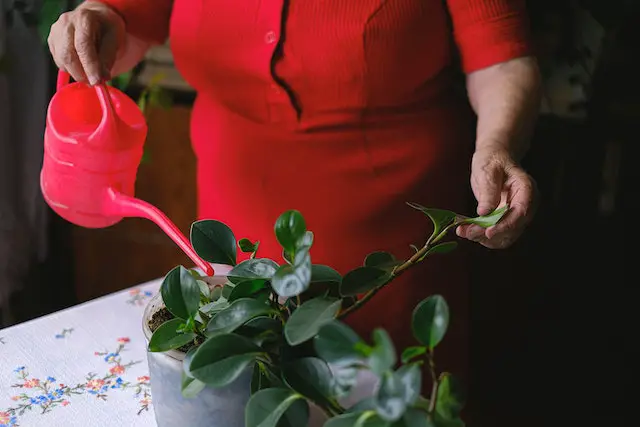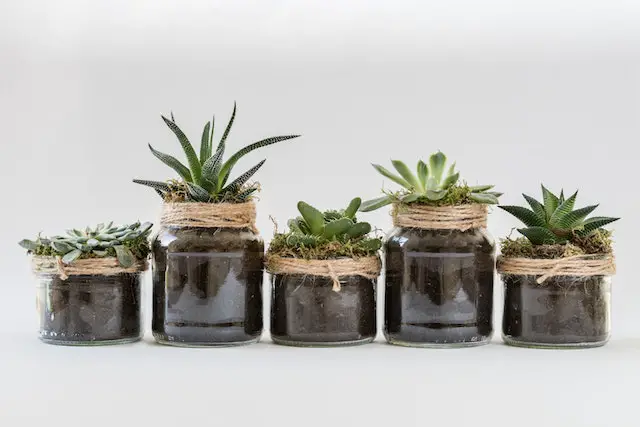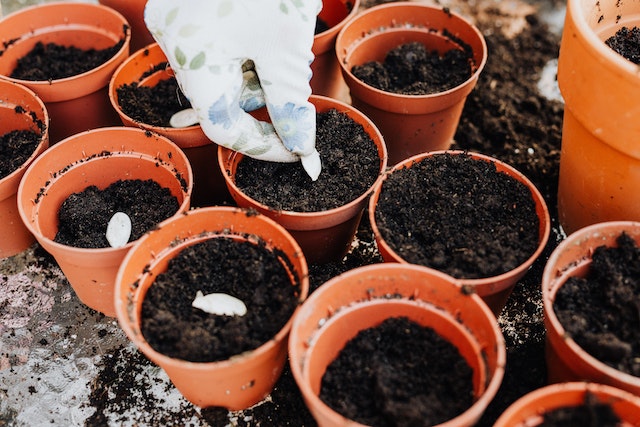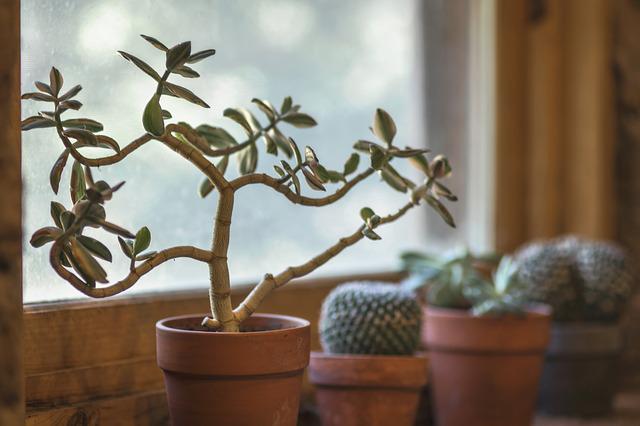How long do succulents survive without water is top searched query. If you’re a succulents fan, you’ve seen plants undergo harsh situations and emerge looking a bit under the weather. It is important to ensure that your succulent plants do not go without water for too long, as this can lead to wilting, browning, and eventual death of the plant.
We want to get the watering of succulent plants perfect because it’s probably a crucial aspect of growing them. The water needs for succulents differ from those of other plants, necessitating a shift in watering practices for seasoned gardeners or people who frequently tend houseplants.
Remember that the most typical reason for succulent death is excessive watering. Nevertheless, because succulents do not need too much water does not mean you should leave them without water.
As a result, even though succulents are drought-tolerant plants, their health subsequently can suffer from a prolonged lack of water.
All these conditions can be confusing, right? So the big question is, how long do succulents survive without water? Worry no more! That is why you have this article. So without further ado, let us dive into it and answer your mind-boggling questions.
How Long Do Succulents Survive Without Water?

Succulents will survive without water longer than the majority of other plants because of their extraordinary capacity to store water in their stems and leaves. But exactly how long is that?
Unfortunately, there is no simple answer to how long the water stored can carry the succulent. This is because various factors are responsible for how long a succulent can survive without water. They include:
● Succulent type
● Seasons
● Size of the pot
● Size and age of the succulent
● Size of Pot
Based on the above factors, it is evident that most succulents like cacti can go months without water. However, other species can only last a few weeks with no water.
Because of that, it is hard to say or generalize how long it takes for all succulents to survive without water. However, in the following sections, we will look at the above factors and how they affect succulent drought tolerance.
Signs of Dehydration In Succulents
While overwatering your succulents can have an adverse effect on their health, underwatering these plants can also harm them. Here are some of the signs you’ll notice in a dehydrated succulent:
- Sometimes, the succulent leaves may turn yellow, brown, or look faded and dull.
- Wrinkling leaves as a result of insufficient water intake
- Slow or stunted growth rate; new leaves may take a longer time to grow.
- The leaves will become mushy if the succulents have been dehydrated for a long time.
- Its soil will completely feel dry to the touch.
- The succulent leaves will begin to fall off gradually.
Factors that Affect How Long Succulents Can Survive Without Water
Various factors influence the ability of a succulent to withstand drought. We are going to examine some of these elements so that you can have a better understanding.
Let’s see how these elements determine how often you should water your succulents:
1. Succulent Type

Small, thin-leaved succulents can’t survive without water for longer than a month. Their tiny leaves can’t hold enough water to keep them alive. Also, thin leaves might lose more water because they have more surface area and stomates.
On the other hand, some succulent species, such as Crassula, can survive without water for up to three months before becoming too shrunken to recover.
Also, Cacti may survive for up to six months without water, although certain species can go longer. Lithops and other succulents may thrive with water only a few times a year.
2. Season
Season affects the way succulents can go without water in two ways. First is the temperature that affects how the succulent can hold water in its soma.
The temperature is the factor that most directly impacts a succulent’s ability to endure a given season. In warm temperatures, succulents will lose more water than in colder months.
Generally, water evaporates from plants and the soil more quickly in warmer climates than in cooler ones. Because of this, you might notice that you need to water your succulents more regularly in the hot summer than in other seasons.
Additionally, throughout the year, several succulent species have periods of dormancy. Although dormancy occurs typically in the winter, specific species, including Aeonium, do so in the summer.
If you’re unfamiliar with the term “dormancy,” it means that a plant undergoes a retarded growth for a brief period. The dormant state of trees, where they drop their leaves every winter and grow them again in the spring once active growth resumes, is perhaps more familiar to you.
3. Size and Age of Succulent
In most cases, larger, more established plants that are older can go without water for much more extended periods than younger, smaller plants.
Succulent offsets or cuttings that are young and have little roots nearly always require daily watering until they are established. A meter-high Crassula Ovata is an example of a large, ancient plant that can last for a few months before requiring water.
In the summer, young plants are more vulnerable to drying out; therefore, watering should begin as soon as the potting soil becomes dry.
4. Size of Pot

Compared to their counterparts planted in the garden, whose roots may access cooler and more humid soil, succulents grown in pots will not survive as long without water. Because water evaporates much more quickly from a container, especially one that is dark and exposed to the sun, potted plants require more frequent watering.
Additionally, smaller pots have a lower water capacity than larger ones. Therefore, a succulent in a tiny pot will require less watering between waterings than plants in larger pots.
5. Type of Soil
Succulents need well-draining, well-aerated soil with a low moisture retention capacity. This is done to avoid the roots being overly wet, which will eventually cause root rot.
The soil’s dryness level is a good indicator of when to water your succulent plants. Always ensure the top layer of soil is fully dry before watering succulents.
Cacti, for example, are drought plants that require little water and prosper in hot settings with little rainfall. Because of this, they need a specific potting mix that is often very well-drained and doesn’t retain much moisture.
How Often Should You Water Your Succulents?
Several factors determine the number of times you should water your succulents. These factors include the succulent species, the weather conditions, and the soil type.
Nevertheless, you can always water the plant every 7 to 10 days since they can store water. Generally, succulents need more watering in the spring and summer, which are their growing seasons.
Regardless, dip your finger into the soil to determine whether the succulent needs water or not to avoid overwatering. For most succulent species, underwatering them is better than overwatering. When there’s excess water in the soil, the plants may suffer from root rot and mushy leaves.
More about succulents:
Summary
Bringing it down to a few words, we will say succulents can typically go without water for up to two weeks, although some succulent species, such as cactus, can go for extended periods without water.
The precise amount of time a succulent may survive without water varies depending on the plant’s type, size, and age, among other things.
For instance, a succulent plant may endure without water for longer if it is more extensive and older. So keep this in mind when watering your plants because you might need to change how frequently you water them depending on their requirements.
Frequently Asked Questions (FAQs)
Succulent enthusiasts also ask the following:
What happens if you don’t water a succulent?
Succulents like cacti can last longer without water because they store water in their stems and leaves. However, this does not imply that depriving them of water for an extended time will result in their most splendid appearance or performance. In all honesty, dried-out succulents won’t look all that wonderful.
Can You Bring a Dried Succulent Back to Life?
Organically, you will reduce watering immediately, but it alone won’t cure the issue in most cases. You want to know whether or not your plant is still redeemable. Given that the harm is still relatively minor, the answer is yes. But if it’s that awful, don’t panic; you can save the leaves and stem of the succulent.
It would help to cut the leaf back below the injured section once the soft portion has dried. Cold-damaged succulent areas usually do not survive, but the succulent plant as a whole can regenerate.
How Long Can Succulents Stay Out of the Soil?
Unlike epiphytes, which are known to thrive on surfaces, succulents can only survive for a few days without soil. But with the proper care, they can bloom for a week or more. Succulents require soil for vital nutrients, and they cannot survive for very long without it.
Conclusion
In light of these facts, most succulents can survive without water for a week or two. However, not all succulents can survive long dry periods as cacti can.
While underwatering may become a problem if you cannot care for your plants while you are away for several weeks, this damage typically does not occur to a plant for more than a few weeks.
However, if you’re a beginner with succulents, you may need further research to get the best guidance in dealing with succulents.

Hey, I’m Lisa and I’ve been an avid gardener for over 30 years. I love writing, talking and living in the garden! Feel free to connect with me on my socials below

